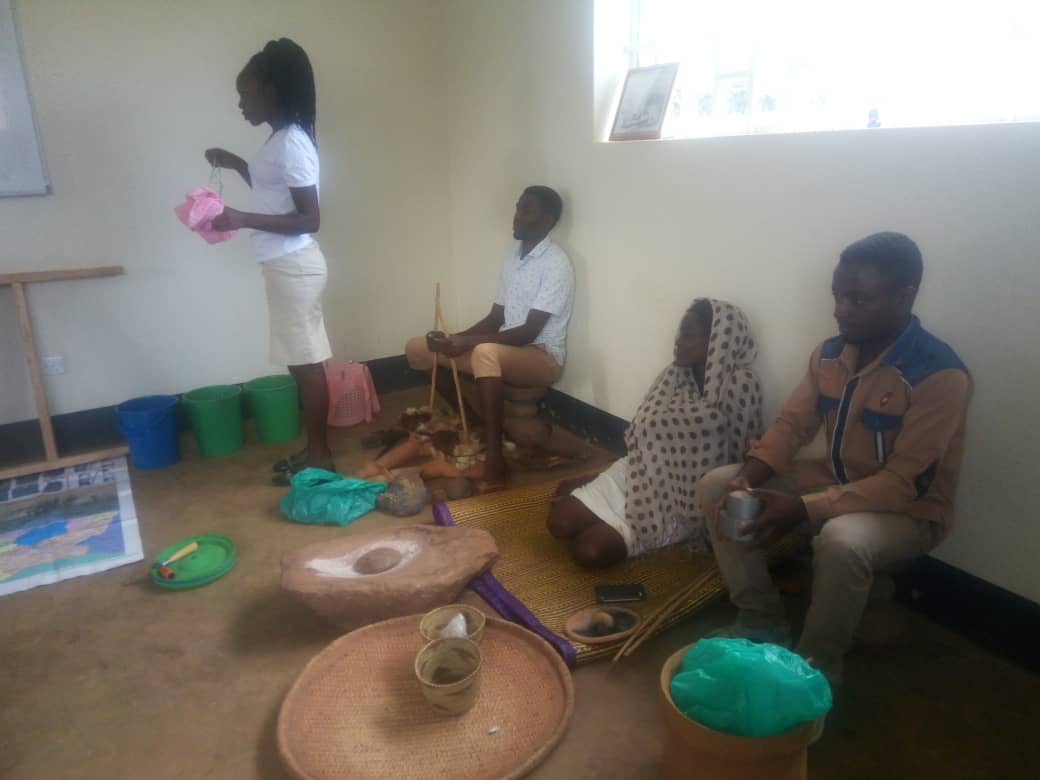The first collaborative exhibition at Kabale Museum – Solomy Nansubuga Nabukalu (ITP 2018, Uganda)
Written by Solomy Nansubuga Nabukalu (ITP 2018, Uganda)
In March 2019 Kabale University and Kabale Regional Museum opened their first ever exhibition named History, the mother of all disciplines. The title means that history cannot work in isolation from other disciplines. The exhibition lasted only one day, but it had taken us more than one month to prepare it. Kabale University is a government institution, the same for Kabale Museum. The collaboration between the museum and the university was of scientific purposes.

Archeology class was introduced at the university last year, and these were first-year students majoring in archeology. The lecturer wanted to show students some of the archaeological artifacts. Students had had to visit the museum, and the next semester the university had a one-day exhibition for students. This included both practical and taught museum activities.
The project started with visits to the museum, where many topics were taught and discussed, including rehearsals. Every Sunday, we worked hand in hand with the lecturer and students and started teaching practically from the process excavation to displaying objects. Even though we only managed to collect pottery and lithics, the students learnt how to excavate, do the sieving, flotation, object cleaning, handling and documentation. These paved the way for the exhibition, which summed up the whole project. The week before the show objects were collected from the museum to the university for rehearsals.

Since there were not many objects to show at the exhibition, we had to figure out how to make the event diversified and make people appreciate the work of archeologists and museums.
During the exhibition, we displayed objects that showed our history, for example
- In technology: At first, men used organic materials, then stone and now iron tools (both locally and on an industrial scale).
- For grinding (food processing): From a grinding stone with a presser to a ginnery.
- How to prepare a traditional brew, thus showcasing the innovation of brewing (chemistry).
The occasion had many dignitaries, from the guest of honour, a chancellor, the vice chancellor to staff (both teaching and non-teaching), religious leaders, visitors from other institutions, parents, the nearby community and the students. The response from the audience was very positive. This is also because we gave them an opportunity to use some of the objects, such as a grinding stone.
Students learnt some practical skills, for example, guiding visitors, delivering presentations, cleaning, documenting and labelling museum objects, sharing knowledge and working as a team. They particularly enjoyed demonstrating the practical side to the public, for example, iron smelting and grinding. Since many of the students participated in this kind of event for the first time, they found it busy and engaging.
From the museum’s perspective working with university students was very useful, as we could finish up some urgent works, for example, cleaning the objects. Moreover, students were very curious about the inner workings of the museum and treated their tasks maturely. We hope to continue this fruitful collaboration in the future.
Solomy
